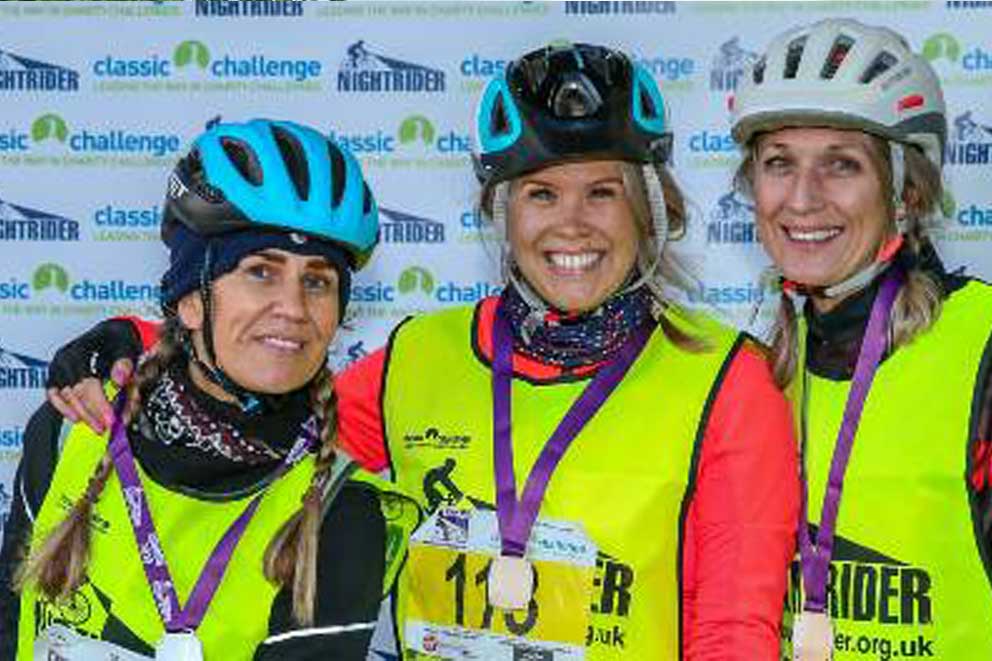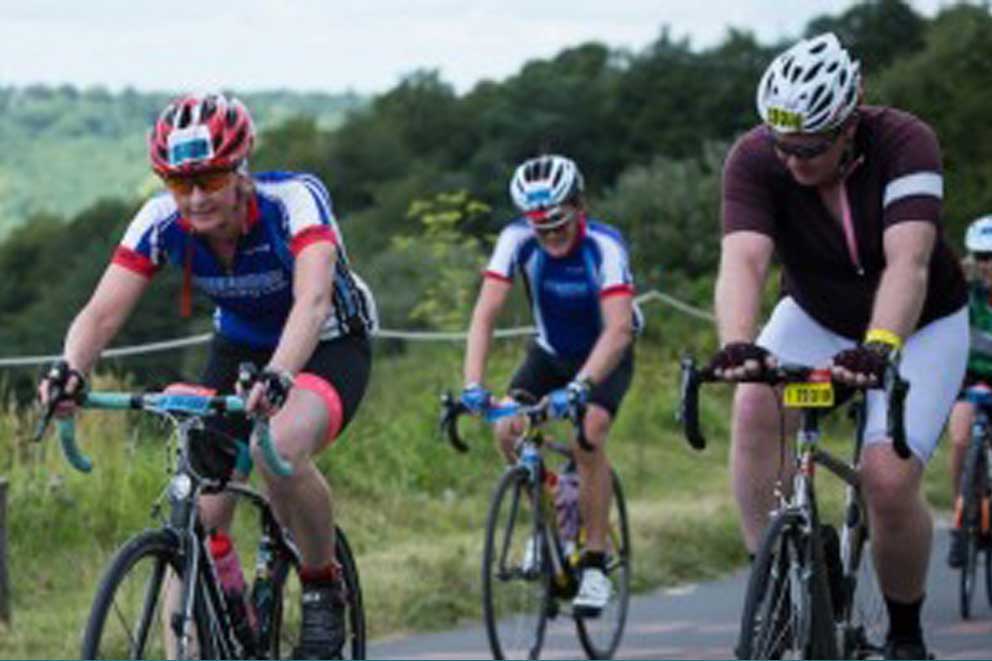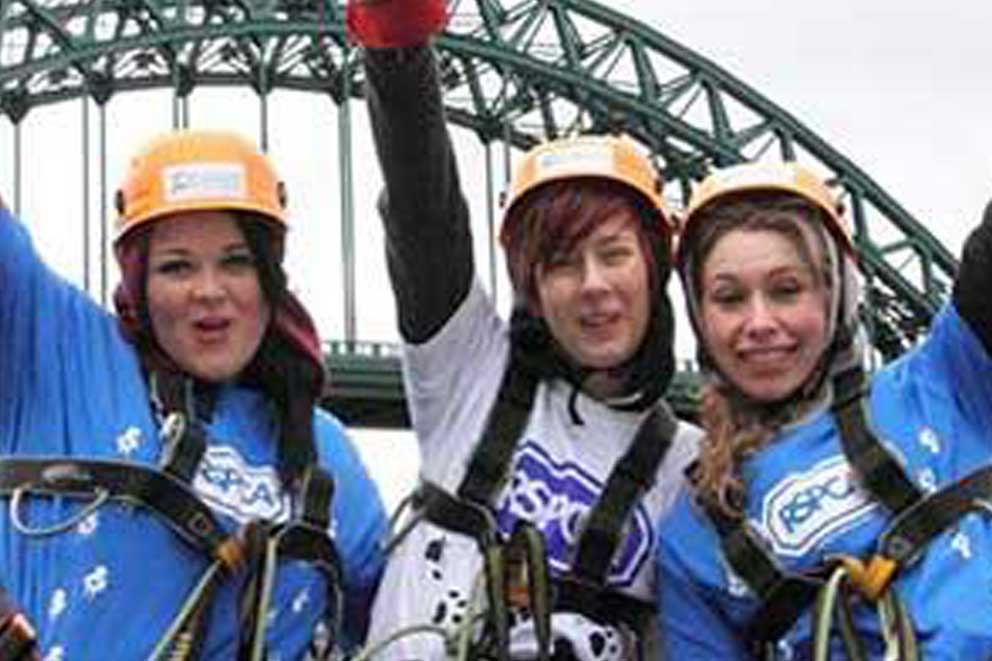Cycling training zone
We're delighted you've decided to take part in a cycling challenge for us and welcome you as part of Team Animal! We're here to help, so check out the information on kit and training, and give us a shout if you have any questions.

Cycling Gear
Bicycle
There are many different styles and types of bicycles, so it's worth going to a specialist shop to get the right one for you, your budget and to ensure it's well fitted to you. Before you start training, be sure your bike is well maintained and safe to ride.
Helmet
It's very important for your safety to wear a helmet during any cycling you take part in. It'll also be compulsory to wear a helmet during all events and challenges.
Clothing
There are lots of varying cycling tops, shorts, socks, shoes, and gloves, but it's up to you how much of it you would like to wear or use.
- Cycling tops have pockets at the back to help you store essentials for your ride. They also are made from technical fabric to keep you cool and will dry quickly during your ride. If you sign up with Team Animal and raise over £50 you will get one of our awesome Team Animal cycle Tops.
- Riding shorts are an essential piece of kit. Cycle shorts have a padded seat to keep you comfortable on long rides.
- Gloves will help keep you protected from the elements, and give you extra padding on your palms.
Lights
It's illegal to cycle in the UK at night without proper bike lights. The minimum you should have is:
- One steady, fixed white light that conforms to BS6102/3 mounted centrally or offside (closer to the middle of the ground) and no higher than 1500mm from the ground. It should be visible from the front and aligned in that direction.
- One steady, fixed red light that conforms to BS6102/3 or BS3648. This should be mounted centrally or offside at the rear of your bike and should be between 350mm and 1500mm from the ground. It should be visible from the rear and aligned in that direction.
- Four reflectors, coloured amber that conform to BS6102/2. These should be fitted to each pedal so that one is visible from the front and one is visible from the rear. If you cannot fit reflectors to your pedals, then you can use a reflective trouser clip or band.
Check lighting packaging or the manufacturer's website to see if their bike lights conform to the Department for Transport's regulations.
If you're taking part in a night ride, you will need further lights as well as high-visibility clothing, such as a high-vis vest, jacket, and reflective rucksack cover.
Maintenance kit
If you're going out on training rides it's important to be prepared with a spares kit. Pack a little kit bag with a small pump, a spare tube, tube repair kit, some type levers and a multitool. These will be enough to repair a puncture, make small alterations on your bike and get you home.

Training
- 1 The indoor trainer is your friend: Indoor training gives you the best chance at quality training, removing the external variables that can affect your session and allowing you to efficiently target a specific area of fitness in a short space of time.
- 2 Consistency is key: Turbo training is typically associated with winter when the weather is poor or there's limited light. However, using the indoor trainer year-round can allow you to train consistently and get effective training sessions.
- 3 Keep it sweet: 'Sweet spot' training is considered to be the most effective way to efficiently build endurance. Cycling between 83 and 97 percent of your Functional Threshold Power (FTP) will help build your aerobic base and your overall fitness.
- 4 Plan ahead: Planning is key if you want to balance your training with work, family and social commitments, and will allow you to squeeze in a session to a tight schedule. Even in 30 minutes, you can get a good workout in.
- 5 Be prepared: Fail to prepare, prepare to fail, as the old saying goes. As well as planning your schedule in advance, having your indoor training setup ready and waiting removes another hurdle that could stop you from riding.
- 6 Gym workouts: Boost your aerobic and anaerobic fitness with high-intensity interval training (HIIT). HIIT sessions will do wonders to kick your body into shape, improve your fitness, make you a stronger and faster cyclist, all the better to get you ready for your challenge.
- 7 Recovery: Recovery is key, in order for your body to adapt and repair after your hard training sessions, you'll need time during your plan to rest and recover. You can always do some yoga or light swimming on these days if you have to do something.
- 8 Bike handling: If you're short on time, indoor training is the most efficient way to improve your fitness - but technique matters, too. Riding outside enables you to get the feel of your bike, how to climb hills, descend and go around corners with confidence. You never know what conditions you'll be riding in during your challenge, so make sure to practice in all weather. Get out on your bike during the sun, rain and wind, to get used to how to ride and dress in all weather.
-
9
Warm-up and Cool down: Warming up and cooling down are often shortened or missed completely when you're short of time. Ideally, you want to give your legs at least 15 to 20 minutes to 'wake up' before hitting the first big effort of the day. There's also the injury prevention factor, warm muscles simply function better than those pushed into tough efforts right away.
A cool down helps return your body to its pre-exercise state, will aid recovery and the adaptation processes. It should be viewed as the first step to preparing your body for your next training session or challenge.
- 10 Enjoy it: Keep your training fun! It can get overwhelming to get everything sorted for your cycling challenge, with the training, fundraising and kit, but remember to keep enjoying it. Look around you when you ride, get satisfaction from learning new routes while you train. Pat yourself on the back when you climb a difficult hill well or get the right gear changes. Remember why you signed up for a cycling challenge for Team Animal, keep that at the forefront and let that motivate you to keep going with a smile on your face.
Training plans for Nightrider events
By signing up with the RSPCA Team Animal, our challenge providers, will also provide a training programme that is tailored to your challenge duration and intensity.



